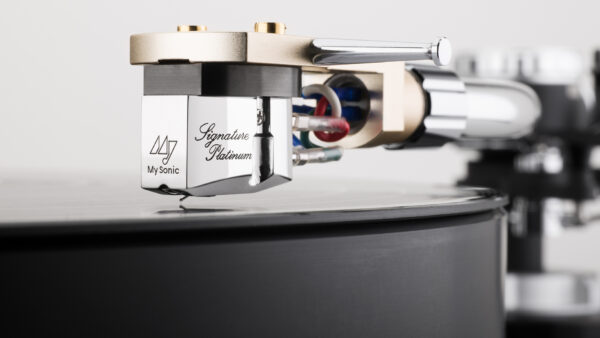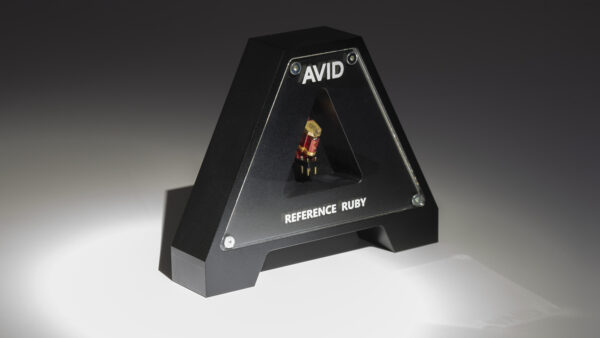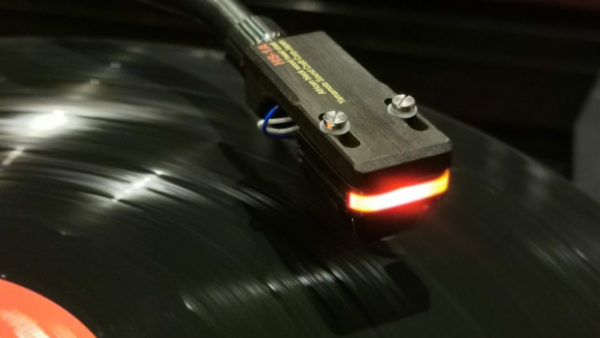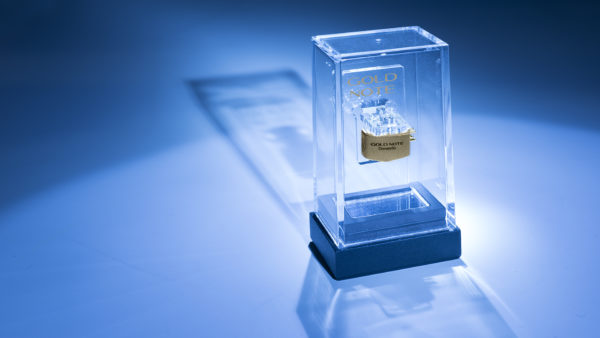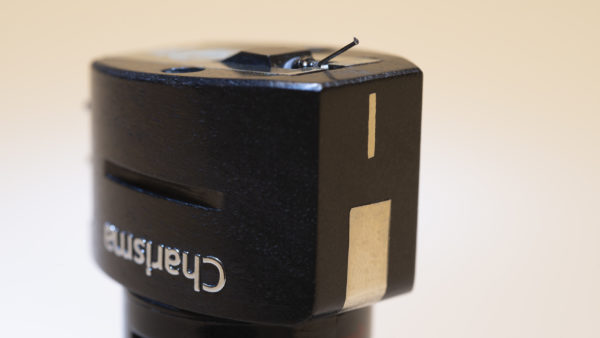The more time you spend on your analog journey, (or any pursuit for that matter) it’s tougher to be knocked on your ear. Not from a jaded perspective, but one of familiarity. Once you’ve heard a number of phono cartridges from the MM and the MC camps, at various price points, it’s easy to construct a matrix of like vs. want vs. afford vs. synergistic. But the DS Audio E1 is truly special. And it’s not crazy money. At $2,750, it includes the DS “equalizer” that is required to amplify the signal from this optical cartridge, which will not work in the context of MM or MC, because of the way it translates the sound from the grooves to electrical impulses.
Queuing up Madeline Peyroux’ Bare Bones is the essence of grain free sound, and immediately has me wondering if this is DS Audio’s entry level combination (there are three higher levels of equalizer and cartridge) I’m freaking out wondering how much better this can get. The DS Audio E1 combines the dreaminess of analog tape with the sheer quiet of high resolution digital.
The presentation this cartridge provides lets you just sink into the music like a massive beanbag chair. It’s so comfortable and artifact free, you never want to fire the booster rockets and escape the gravitational pull of your listening chair. But you will have to get up and change the record. Where’s Alfred when you need him?
You won’t miss what you can’t have
Of course, you can’t have everything for $2,750, but the DS Audio E1 gives you so much music, unless you’ve got tremendous cash reserves you might not ever miss it. Moving to Aimee Mann’s Lost In Space reveals layer upon layer of low level, atmospheric, positively trippy sounds that weren’t coming through in this way, even with my $10k Koetsu Jade Platinum and Pass XS phono stage. As my pal from across the pond Ken Kessler said in his review of the same cartridge, “you won’t be prying my Koetsu out of my hands anytime soon,” I concur, yet this cartridge has a special presentation.
The DS Audio E1 lacks a bit of ultimate dynamic punch and slam, and a slightly diminished left to right soundstage that the top cartridge/phono stage combinations offer. Where the Koetsu paints a sonic picture that goes beyond my speakers, almost beyond the room walls, the DS Audio E1 goes a bit past the speaker boundaries – still just fine. Yet, what it serves up a massive dose of, is flow and pace.
However, the picture painted by the DS Audio E1 is more coherent. If you happen to be a classical music lover, it’s like the way an orchestra sounds in a great hall – sounds come from general directions, but it’s not “pinpoint imaging” like you hear in Steely Dan’s Aja. (or any of your other favorite meticulously recorded rock records) It’s like mono with benefits. Imagine being able to enlarge a single, original Quad 57 to be about ten feet wide and six feet tall. It’s kind of like that.
The DS Audio E1 is so organic, so cohesive, it’s the ultimate anti-audiophile cartridge. Give your audiophile adjective gland to rest and shut the cliché generator down and just listen. Much like a pair of Magnepans in the sense that they are budget speakers that require top notch ancillaries to really deliver everything they are capable of, the DS Audio E1 is both awesome and counterintuitive in the same way. It’s at its best in the context of a resolving system.
The difference
MM and MC cartridges both produce sound in the same basic way. A cantilever vibrates in the record groove with tiny magnets at the end inside a fixed coil or tiny coils inside a fixed magnet structure. Either way, it’s a fully electromagnetic system that is still bogged down by the structure used.
DS eliminates the coils and magnets with a completely different approach to recreating the sound embedded in your grooves. Instead of depending on coils and magnets, the cantilever is attached to a pad that blocks the light from an LED striking a photo receptor. You can read the full explanation (with some cool animations) here: https://www.ds-audio-w.biz/optical-cartridge-basicprinciple/ This is why the DS Audio E1 needs its own equalizer/phonostage. And should you want more, you don’t have to upgrade the cartridge and equalizer, you can merely move upstream to one of the threebetter equalizers. A thoughtful touch.
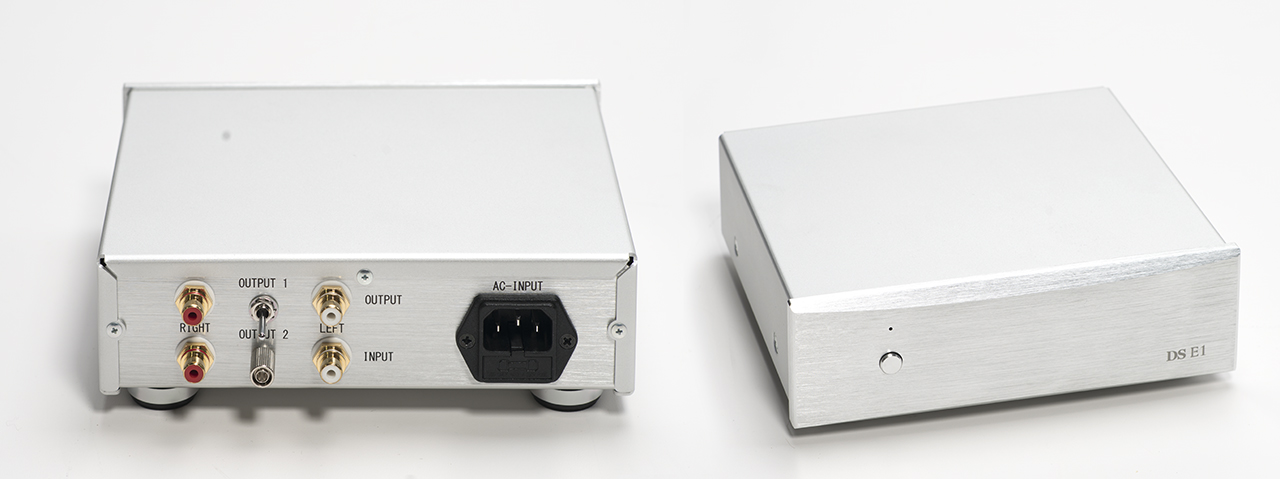 Toshiba invented the optical cartridge over 40 years ago, but the technology of the day was not good enough to realize their design to the fullest. Taking what DS has learned from inventing the optical mouse, the current cartridges are fabulous.
Toshiba invented the optical cartridge over 40 years ago, but the technology of the day was not good enough to realize their design to the fullest. Taking what DS has learned from inventing the optical mouse, the current cartridges are fabulous.
The journey
Fully optimized in the Technics SL-1200G with the Analog Magik toolkit, the DS Audio E1 sounds nice. The 1200G already has a slightly truncated soundstage, so something like this will probably not blow you away. A Pass INT-60 and pair of Harbeth Compact 7s round out the system, and while things are friendly all the way round, no one came away from this setup amazed. A similar experience was had with the DS Audio E1 mounted to a VPI Prime. The VPI Classic reveals more music than the Technics but it is still not quite as involving as I’d like, but the cartridge’s basic character is still coming through.
Moving out to system one, and carefully installing the DS Audio E1 in a 12-inch Audio Creative tonearm affixed to the Artisan Fidelity Garrard 301 proves a revelation. In the context of all the analog instruments at my disposal, this is the Goldilocks configuration. The extra sonic weight provided by the big idler wheel table (albeit painstakingly re-imagined to Christopher Thornton’s specification) proves breathtaking. This is definitely an “oh shit” moment in hifi, and I don’t get many of these. It’s like those rare occasions when the crew of Star Trek eats real food instead of what they usually get from the replicator. Like that.
It is worth mentioning here, that DS suggests a tracking force of 1.7 grams and I concur. However, you will need to find a stylus tracking force gauge that will allow you to access the short cantilever of the DS Audio E1 . Our go-to Clearaudio Weight Watcher gauge has too short of a landing for the DS Audio E1 to work with, but our Ortofon gauge, with a much longer paddle for the stylus to set down on works perfectly.
The more records that the DS Audio E1 glides through, the more pleasure it provides. The highs are resolute, but oh, so smooth, with a level of delicacy that just might fool you into thinking you’re listening to an open reel tape. The bass response is firm and defined. While not as taut, punchy and forceful as what the world’sfinest provide (and we’re talking five figures for the cart alone) it’s way beyond what you’d ever expect out of a $1,275 cartridge. Remember, you’re getting a cartridge anda phono stage for $2,750 here.
The only place the DS-E1 lost its way, ever so slightly, was playing a few tracks in my collection that are both extremely dense and compressed at the same time. Revisiting this further with a few test records on hand, I had zero issues, so the only conclusion I can draw is a few bad records. When put to the test, the DS cart tracks with the best.Musical Surroundings Garth Leerer confirms this by saying, “Actually, being a displacement generator instead of the conventional MM/MC electromagnetic velocity transducer, the DS optical pickups will actually track a square wave. There are records out in circulation which have “errors” that may be revealed with the DS Audio cartridges while many MM/MC cartridges may mask these issues.”
You’ll miss what you can’t get anywhere else
Though the DS Audio E1 has modest limitations, the things it excels at will leave you longing the minute you go back to listening to something else. This cartridge is addicting in a way very few at any price have ever been. And your digital player just might start collecting dust.
Going back to the Quad reference again, the DS Audio E1 is not only incredibly special, it has a voice that you can’t get anywhere else. If you love this outlook on musical reproduction, it’s going to spoil you for anything else.
This is such a significant breakthrough in how analog signals are produced, I feel like you should own one as part of your journey. You may stay there, but even if you don’t, having the DS optical cartridge experience will recalibrate your level of expectation. Should you be a music lover with multiple turntables or tonearms, the DS is a must have for your collection. Those of you with six figure analog front ends, owe it to yourself to hear the top DS cart/equalizer combinations.
The optical-analog systemis so good, it was so easy to keep comparing it to other carts in the $5k – $10k range and being slightly disappointed, then coming back to my senses and realizing just what a miracle this is for the price asked.
A new benchmark
It would be easy to call the DS Audio E1 optical cartridge and equalizer a benchmark at the $3k price point. I think that it’s easily a benchmark at twice, maybe even three times that price. If that doesn’t qualify for one of our Exceptional Value Awards, I don’t know what does. I haven’t had this much fun with a cartridge in a very long time.
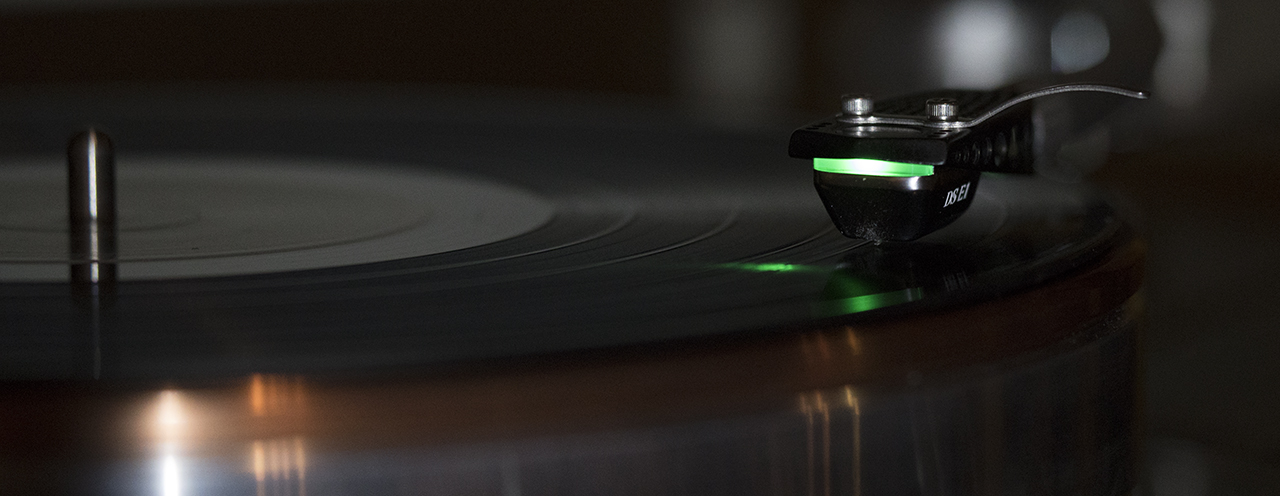
The DS Audio E1 Optical Cartridge/equalizer system
$2,750
Turntable Artisan Fidelity Garrard 300 w/Audio Creative Groovemaster II Arm
Preamplifier Pass XS Pre
Amplifier Nagra Classic
Speakers Focal Stella Utopia EM
Cable Cardas Clear Beyond and Tellurium Q Black Diamond
Power PS Audio P20 (front end)

